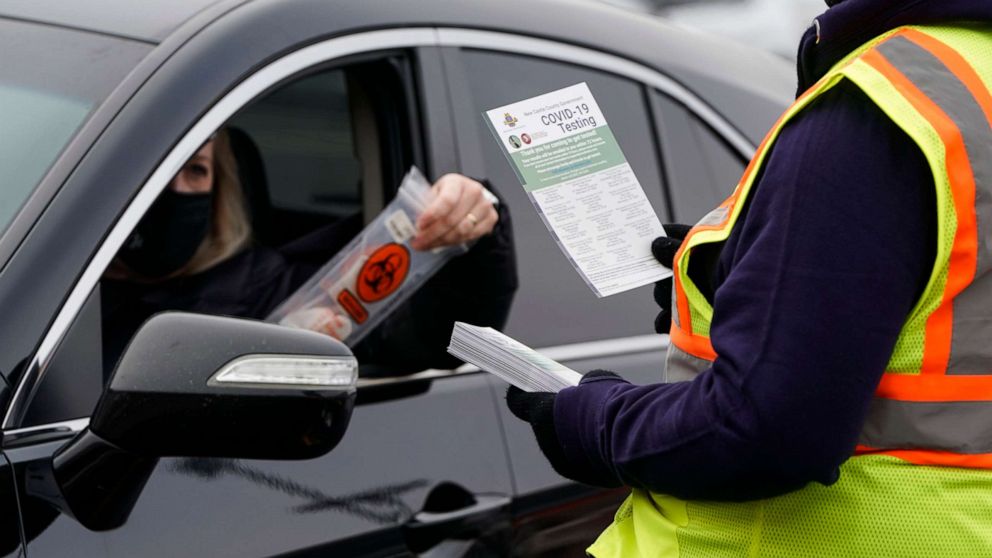
Two independent research groups have published findings that confirm what many scientists have long suspected: the US has its own viral variants COVID-19, which are distinct from the genealogies of Britain and South Africa, which make headlines in recent weeks .
On Wednesday, researchers at Ohio State University Wexner Medical Center announced two distinct, newly identified variants. The next day, researchers at Southern Illinois University said they found a variant that could have appeared months ago and spread rapidly across the country. The variant is probably the same or similar to one of the variants identified by Ohio researchers.
While viruses are constantly moving, these mutations are not inherently dangerous, experts have warned. More scientific experiments will be needed to show whether the new variants identified in the US are more transmissible, more deadly or whether they could impact the vaccine.
And researchers have predicted that more variants could be identified in the coming weeks as more scientists start looking for them.
“This should be a wake-up call that we are not doing enough genomic surveillance,” said Dr. Angela Rasmussen, a virologist and associate researcher at the Center for Infection and Immunity at Columbia University’s School of Public Health.
“We will see a lot of this work coming out,” said Rasmussen, who was not involved in any of the studies. “If [the variants] are associated with increased transmissibility or remain unseen. “
Since the advent of new variants around the world, it has been feared that they will cause more severe diseases and deaths, be more communicable and make vaccines ineffective. It began first with identified variants from the United Kingdom and then from South Africa, both of which are considered to be more transmissible, but not more deadly. But it is unlikely to undermine current vaccines, according to very preliminary research.
Researchers at Southern Illinois University call this US variant 20C-USA. The variant is not new, but only recently identified. Its origin has been followed by a sample of Texas patients since May 2020. Since then, the variant seems to have traveled across the country. According to Dr. Keith T. Gagnon, one of the lead researchers in the study launched by Southern Illinois, 20C-USA now compromises about 50% of the samples in the country. It is now widespread in the Upper Midwest, which is why researchers at Ohio State have detected a strikingly similar variant.
Dr. Daniel Jones, one of the lead authors of the Ohio State study, told ABC News that these variants could be of the same offspring, but more research is needed on each.
While some researchers, including Dr. Deborah Birx, the White House working group, have speculated that there may be an American variant surrounding the nation, these two studies are the first fierce evidence of one.
Gagnon said that scientists needed in the US months to identify this variant because the US does not systematically monitor and track the ever-changing genetic structure of COVID-19 samples collected from patients.
Gagnon also said that it is possible that the 20C-USA variant will be more transmissible, especially with the increase of infections in autumn and winter. The variant could have been lucky and gained a foothold, because people spent more time indoors and saw family and friends for the holidays, without adequate social distance and wearing a mask.
With more vaccines available now, there are fears that this new US variant will make vaccines ineffective. But so far there is no evidence that mutations affect the effectiveness of vaccines.
“Here it is, under our noses for months,” Gagnon said, meaning that volunteers who were vaccinated in late-stage vaccine studies were likely exposed to it and a majority were protected.
“It doesn’t look like it’s going to stop vaccines,” Gagnon added. Researchers at Ohio State agreed with these sentiments at a news conference earlier this week.
The other variant discovered by Ohio researchers was found in a single patient. It has similar mutations observed in the UK and South Africa, but was not associated with travel and developed independently here in the US. It is not clear how much of the population has this variant and whether it will be an important one.
Both groups recommended keeping calm and waiting for more experimental studies to determine what these variants will do.
“We are not prepared to overreact,” said Peter Mohler, chief executive and co-author of the Wexner Medical Center study at Ohio State University.
“We want to make sure we study them [variants] in the lab and get very good data ”to determine if they change transmission and mortality, he added.
But researchers also warn that the longer COVID-19 is around, the more likely it is that there will be mutations and variations. And each time we will have to determine whether the variants are more transmissible or more deadly.
Sean Llewellyn, MD, Ph.D., is a resident physician in family medicine at the University of Colorado and a contributor to the ABC News Medical Unit. Sony Salzman is the coordinating manufacturer of the unit.